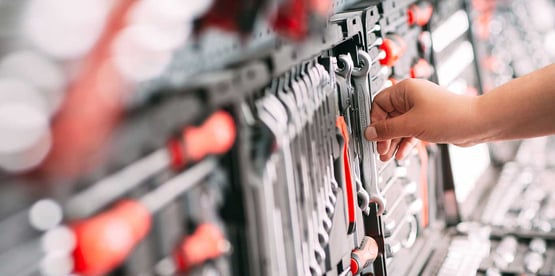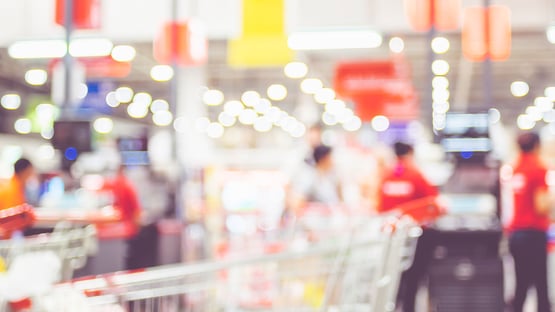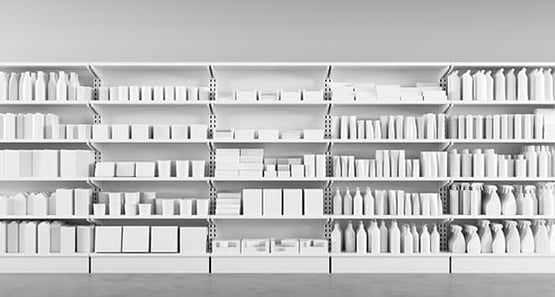Despite the health crisis, DIY stores showed excellent performance in 2020. Some of them even saw the crisis as an opportunity to accelerate their digital transformation—a precondition for their survival in the face of growing competition from the now ubiquitous e-commerce. But to survive, is it enough for them to simply propel their business into the digital realm? Should we be concerned about the possibility of a fault line emerging between, on the one hand, the integrated big chain stores and pure players, and on the other hand, independent stores which may not have managed to make the shift in time? How should DIY stores prepare for life post-Covid so that this deep change does not eventually result in a two tier sector? An analysis by Vincent Raulin, Key Account Manager, Pricer.
 Vincent Raulin, Key Account Manager, Pricer
Vincent Raulin, Key Account Manager, Pricer
Some DIY stores flourished alongside the boom in e-commerce—the big winner from the lockdown. Most of them had a better year than the prior season. But not all were able to follow that trend, which accelerated in the context of Covid.
And while government financial assistance for digitalization would eventually bear fruit for eligible retailers, the fact remains that this evolution needs to be successfully supported at a structural level and for the long haul. Digital is a precondition, but that alone is not enough.
It’s also important not to lose sight of the qualities of brick-and-mortar stores, which have an undeniable advantage in pushing back against the pressure from pure players… as long as those qualities are utilized to the full.
Anticipate lulls in activity to successfully negotiate the shift that digitalization represents
Considered a guarantee of continued business in the midst of on-off Covid restrictions, digital transformation has become a must. Retailers have little choice but to invest in it urgently and on a large scale. But how do you go about doing that when you don’t have the financial resources or the IT skills internally to make it happen?
Some stores will seek support from their suppliers to navigate the transition with readymade solutions. Others will likely turn to specialist marketplaces like ManoMano and Amazon, which will integrate them into their online platforms. Consequently, competition intensifies from retailers that do not need to support the costs of running stores in city centers.
Not to mention all the independent retailers based in Spain and other parts of Europe which have invested in these marketplaces and are banking on the price factor. In the end, it has become apparent that anyone can become a pure player and compete with the brick-and-mortar stores.
Most stores will undoubtedly catch up in the years to come, but at some point in the future, when they are all placed neck and neck, how are they are going to differentiate? Will they fall back on the classic approach of yesteryear and offer their customers more services? Or will they start another price war?
One thing’s for sure: The current peak in activity will be followed by some kind of mitigation process. And this is why it is so important to anticipate that lull phase to avoid sliding into a two-tier system of digitalization.
Gaining a split-second’s advantage has become crucial
As well as changes in consumption, the digital strategies implemented will need to take into account the qualities of brick-and-mortar stores. Even more than grocery shoppers, DIY customers need to go in person to touch and feel the product, perhaps try it out, and compare it to others. It’s difficult to buy a drill, a pack of screws, or a molly bolt without being able to check it out for yourself in person.
Even so, now more than ever the sector needs to accelerate its digital transformation to go further in simplifying the customer journey, especially in the context of Covid. With restrictive measures ongoing and limits on how many people can enter stores, retailers need to do all they can to hold the customer’s attention for as long as possible, otherwise they will lose traffic.
Finding the product fast has become a key challenge for physical stores, which also need to make their customers—amateurs and professionals alike—want to come back and increase the value of their cart. This means it’s important to ensure the store is well stocked, has a good layout, and is strong on advice—and that includes ensuring sales personnel are more readily available, even though there may be fewer of them.
In these uncertain times, having a physical store is an undeniable advantage—as long as it doesn’t become another hidden cost.
All the more so, since brick-and-mortar stores need to preserve their margins while staying efficient so they don’t lose the price competition to pure players, whose other key asset is the speed of their delivery services. Let’s take as an example the typical two-hour in-store click and collect service.
Once an order is placed online, an employee has to find the product on the shelf—instead of the customer—and deliver it to the order collection point. If the store wants to maintain its margins, it has no choice but to try and optimize this whole operation. Gaining valuable seconds has become crucial, and it was e-commerce that drove this momentum.
Optical wireless communication to increase operational efficiency
To help click and collect continue its ascent, stores are increasingly turning to a technology low on energy use, reliable, and responsive: optical wireless communication, in which data are transmitted via LED. The instant flash emitted by electronic labels allows staff members to find the product fast.
This is practical not only for order picking and preparation, but also for shelf stacking. In a DIY store offering 50,000 separate products, with minimal differences among them in certain aisles, such as Hardware or Paint, this flash can save 10 minutes on preparing a complete order and double that on stacking a shelf.
The result is fewer products in the wrong place and fewer products out of stock. Employees can also use the flash to help customers locate the label and therefore the product they need, saving them up to 30% of the time it would otherwise take.
Being freed up from some of the lower added value tasks, in-store personnel can then focus more on sales.
As well as time savings, employees benefit from better working conditions: no more trips back and forth between the stockroom and the shop floor, or hours spent getting a pallet of products on the shelf—time-consuming tasks which need doing increasingly often because of the explosion in online sales.
Being highly in demand in these circumstances, the labeling system needs to be able to stay the distance during a peak as big as that seen during the first lockdown: a 124% increase in flash activations between March and April 2020. With low battery use, optical wireless communication allows just that.
Giving the transformation long term security via the Cloud
Digital transformation generally needs to be done in a matter of months rather than, say, five years. The Cloud is the ultimate agile tool allowing each store to quickly build and configure a solution with options for monitoring tailored to their needs. This way, stores can give themselves the means to facilitate integration and to secure their transformation for the long term. All the protection, backup, and restore aspects are all the more essential considering the real-time changes to information possible with flash, starting with price displays.
To ensure a successful transition in the Covid era, DIY stores need to bank more than ever on technologies capable of bringing them speed, responsiveness, and sustainability, without losing sight of their employees’ and customers’ wellbeing, which have been severely tested.
A French version of this byline was published in French in Le Journal du Net: La transformation digitale, un impératif de survie pour les enseignes de bricolage ? (journaldunet.com)



